Ivy Escallonia Escallonia 'Iveyi'

ABOUT
Escallonia 'Iveyi' is an attractive evergreen shrub known for its lush foliage and showy blooms. The leaves are glossy, dark green with a slightly toothed edge, providing a thick and bushy appearance. Each leaf is small to medium in size, contributing to the dense texture of the plant. The plant shines in the blooming season with its clusters of white flowers, which are bell-shaped and fringed with a hint of pink. These flowers are abundant and form prominent, pyramid-shaped clusters that stand out against the foliage. The plant also exudes a light, sweet fragrance that can add to the sensory appeal of any garden space. The overall impression is one of a robust, healthy shrub that is both pleasing to the eye and attractive to various pollinators such as bees and butterflies. Escallonia 'Iveyi' is a popular choice for ornamental gardens due to its appealing appearance and the contrast between the bright flowers and the dark, glossy leaves.
About this plant
 Names
NamesFamily
Escalloniaceae
Synonyms
Iveyi Escallonia, White Escallonia
Common names
Escallonia 'Iveyi'.
 Toxicity
ToxicityTo humans
Escallonia 'Iveyi' is generally considered non-toxic to humans. There are no well-documented cases or reports of significant toxicity or poisoning from ingestion or contact with this plant. However, it is always advisable to exercise caution and avoid ingestion of ornamental plants. If any part of the plant is accidentally ingested and symptoms or discomfort occurs, it is recommended to seek medical advice.
To pets
Escallonia 'Iveyi' is not known to be toxic to pets. There is limited information available on its toxicity to animals, but it is not listed among the common poisonous plants to dogs or cats. That being said, ingestion of any plant material can potentially cause mild stomach upset in some pets. If your pet has ingested parts of the Escallonia 'Iveyi' and shows signs of distress, consult with a veterinarian.
 Characteristics
CharacteristicsLife cycle
Perennials
Foliage type
Evergreen
Color of leaves
Green
Flower color
White
Height
6-8 feet (1.8-2.4 meters)
Spread
6-8 feet (1.8-2.4 meters)
Plant type
Shrub
Hardiness zones
7
Native area
South America
Benefits
 General Benefits
General Benefits- Attractive Flowers: Iveyi bears clusters of fragrant white flowers that are visually appealing and can attract pollinators like bees and butterflies.
- Dense Foliage: The shrub has dense evergreen foliage that can provide privacy and act as a windbreak or noise barrier.
- Hardiness: This plant is relatively hardy and can withstand a range of climatic conditions once established, reducing the need for constant care.
- Low Maintenance: Iveyi requires minimal maintenance once established, making it suitable for those with limited gardening time.
- Versatility: It can be used in a variety of garden settings, including borders, hedges, and as a standalone ornamental plant.
- Tolerance to Pruning: The plant responds well to pruning, allowing gardeners to easily shape it and maintain a desired size.
 Medical Properties
Medical PropertiesThis plant is not used for medical purposes.
 Air-purifying Qualities
Air-purifying QualitiesThis plant is not specifically known for air purifying qualities.
 Other Uses
Other Uses- Privacy Screening: Escallonia 'Iveyi' can be grown as a dense hedge for privacy due to its bushy growth habit.
- Windbreak: In coastal or exposed gardens, this plant can act as a protective barrier against strong winds.
- Topiary: With regular pruning, Escallonia 'Iveyi' can be shaped into various topiary forms for garden decoration.
- Sound Barrier: The thick foliage of the plant can help dampen noise when planted along roads or noisy areas.
- Insect Habitat: The dense branches provide shelter and breeding places for beneficial insects like ladybirds.
- Erosion Control: The deep root system of Escallonia 'Iveyi' can help stabilize slopes and prevent soil erosion.
- Sensory Garden: The scented flowers can be included in sensory gardens for their fragrance and to attract pollinators.
- Seasonal Interest: Gardeners use this plant for its consistent evergreen foliage and seasonal flower displays to enhance garden aesthetics.
- Backdrop for Other Plants: Its dark green leaves provide a contrasting backdrop that highlights the colors of other flowering plants in the garden.
- Crafting: Flexible branches may be used in crafting or as natural weaving materials for small garden projects.
Interesting Facts
 Feng Shui
Feng ShuiThe Escallonia is not used in Feng Shui practice.
 Zodiac Sign Compitability
Zodiac Sign CompitabilityThe Escallonia is not used in astrology practice.
 Plant Symbolism
Plant Symbolism- Resilience: Escallonia plants are known for their hardiness and ability to withstand challenging conditions. This makes them symbolic of resilience and the capacity to endure and thrive despite difficulties.
- Growth and Thriving: Escallonia 'Iveyi' often displays lush, vigorous growth, symbolizing personal growth, prosperity, and the flourishing of endeavors.
- Protection: With its dense foliage, Escallonia can serve as a natural shelter for birds and other wildlife, symbolizing protection, security, and the nurturing of those in need.
- Boundaries: Because Escallonia can be used for hedging, it symbolizes boundaries, delineation of space, and respect for personal space and property.
- Adaptation: The plant's ability to adapt to different soil types and environments represents flexibility, adaptability, and the skill to adjust to new situations.
 Water
WaterThe White Escallonia benefits from consistent moisture but does not like to be waterlogged. Water the plant deeply once a week, providing about 1 to 1.5 gallons of water each time for mature plants to ensure the soil is moist to the root level. During hot or dry periods, you may need to increase watering frequency to twice a week. Always check the top couple of inches of soil for dryness before watering again to prevent overwatering. Reduce the amount of water and the frequency during the winter months when the plant is not actively growing.
 Light
LightWhite Escallonia thrives best in full sun to partial shade. It should be placed in a spot where it can receive at least 6 hours of sunlight daily. Bright, indirect sunlight for the remainder of the day helps promote healthy growth and abundant flowering.
 Temperature
TemperatureWhite Escallonia is hardy and can withstand a range of temperatures; however, it grows best when the temperature ranges between 50°F and 85°F. It can survive short periods of colder weather, as low as 20°F, but extended exposure to freezing temperatures could damage the plant.
 Pruning
PruningPrune White Escallonia to shape the plant, remove any dead or damaged branches, and encourage bushier growth. Pruning is best done immediately after the plant has finished flowering, usually in late summer or early fall. Pruning at this time allows the plant to set buds for the next year's blooms.
 Cleaning
CleaningAs needed
 Soil
SoilEscallonia 'Iveyi', commonly known as White Escallonia, thrives best in well-drained soil, enriched with organic matter. The ideal soil mix should contain two parts loam, one part peat, and one part sand or perlite to ensure good drainage. The optimum pH range for this shrub is between 5.5 and 7.0, slightly acidic to neutral.
 Repotting
RepottingWhite Escallonia does not require frequent repotting as it's a shrub meant for outdoor gardens. Repotting is only necessary if it's grown in a container and has outgrown its pot, typically every 2 to 3 years.
 Humidity & Misting
Humidity & MistingWhite Escallonia is adaptable to a range of humidity levels and does not have specific humidity requirements. It can thrive in the varying humidity levels typically found outdoors in its growing zones.
 Suitable locations
Suitable locationsIndoor
Provide bright light, well-drained soil, and moderate watering.
Outdoor
Choose sunny location, well-drained soil, water regularly.
Hardiness zone
7-10 USDA
 Life cycle
Life cycleEscallonia 'Iveyi', commonly known as Ivey's Escallonia, begins its life as a seed, which upon germination grows into a young seedling. As conditions allow, the seedling develops a root system and shoots, eventually growing into a juvenile plant. This stage is characterized by rapid growth and the formation of the plant's basic structure. Upon reaching maturity, the plant produces clusters of fragrant white or pinkish flowers, typically in the summer, which are attractive to pollinators. Following pollination, these flowers develop into small, dry fruits containing seeds, thus completing the reproductive cycle. Over time, the mature plant may become woody and less vigorous, signaling the need for rejuvenation pruning to stimulate new growth and ensure the plant's longevity.
 Propogation
PropogationPropogation time
Spring-Early Summer
Propogation: Escallonia 'Iveyi', commonly known as Ivey's Escallonia, is most commonly propagated through semi-hardwood cuttings. This process typically takes place during the late summer. For propagation, healthy, non-flowering shoots of the current year's growth are selected. Cuttings should be about 4 to 6 inches (10 to 15 centimeters) in length, and the leaves at the lower end should be removed. The cut end of the cutting is then dipped in rooting hormone to encourage root growth. Afterward, the cuttings are planted in a well-draining potting mix and kept under high humidity and indirect light until roots have developed, which can take several weeks. Once rooted, the new plants can be gradually acclimatized to less humid conditions and eventually potted up or planted out into the garden.

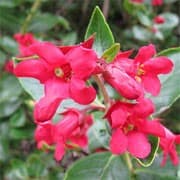
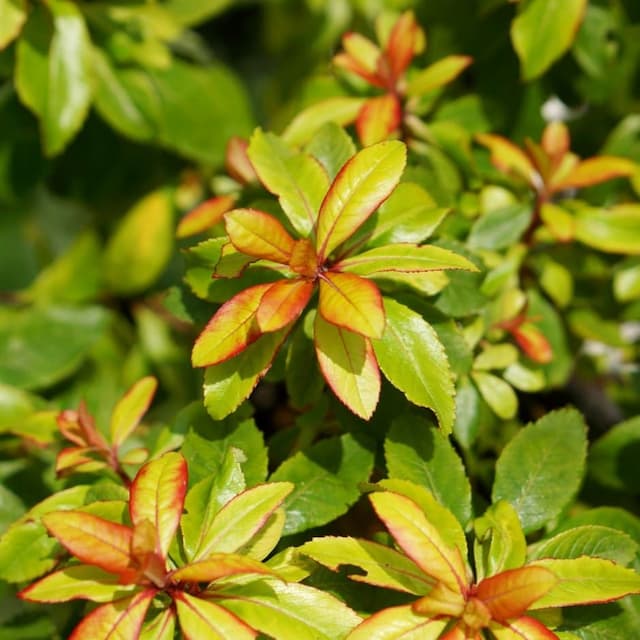

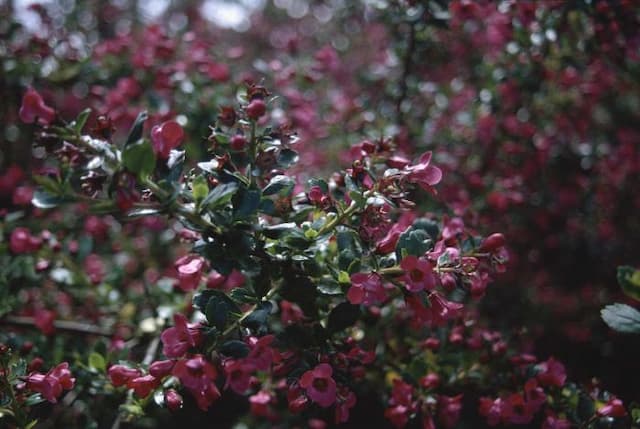
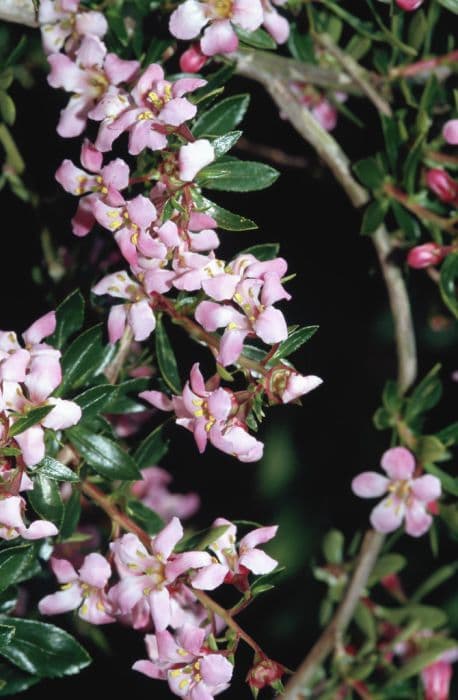
![Escallonia [Golden Carpet]](/_next/image?url=https%3A%2F%2Fplants-admin.emdemapps.com%2Fimages%2Fplants%2F%2Fimages%2F604b59284be41.png&w=640&q=75)
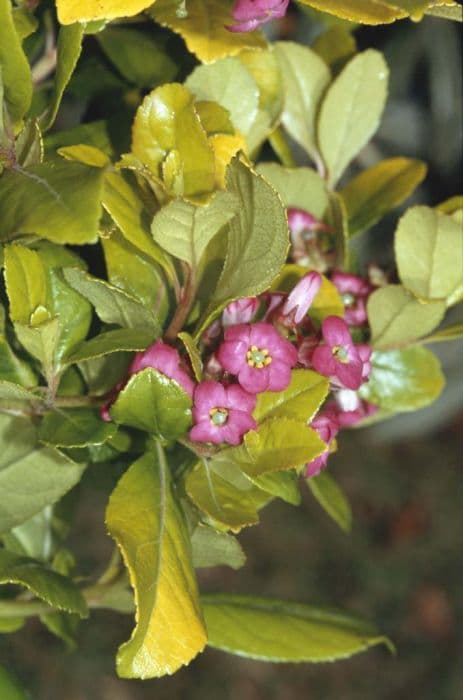
![Escallonia [Pink Elle]](/_next/image?url=https%3A%2F%2Fplants-admin.emdemapps.com%2Fimages%2Fplants%2F%2Fimages%2F604b630962bc2.png&w=640&q=75)
